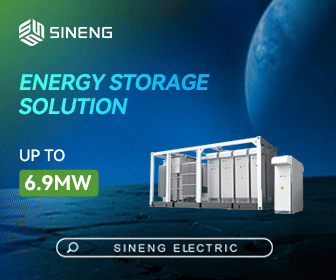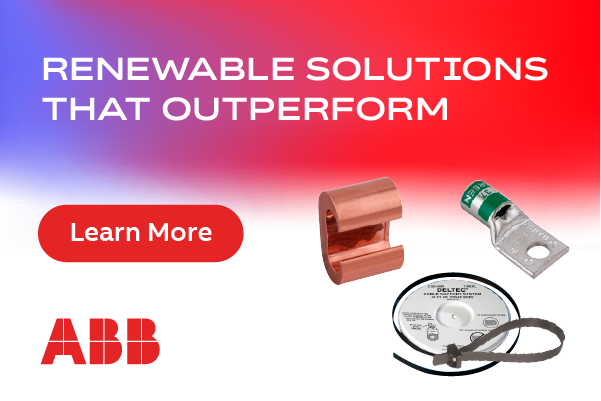Energy Storage Systems for Utility-Scale PV Plants
Almost every region in the world has deployed renewable energy generation. In the United States, for example, most states have a renewables portfolio standard which requires a specific portion of all generation to be produced from renewable energy. In part, this has propelled the US to become one of the biggest markets in the world for solar energy and for energy storage projects.
Although energy storage is just now gaining significant momentum, some studies predict that this market will surpass $50 billion by 20201. During this time, numerous storage technologies will be fighting for their predominant position in the market. What is clear is that batteries will play a key role inside the storage sector as the main electrical energy storage technology. Additionally, US policy is now leading the way with some important Federal decisions. For instance, the US Department of Energy declared that energy storage will play a key role for the country’s search of energy security and independence. Also, the Department of Defense has invested more than $800 million in energy storage programs since 20092. California and Puerto Rico are paving the way and more states are shortly behind, like Texas, New York and those connected to PJM transmission.
Energy storage projects are being deployed with photovoltaic (PV) systems anywhere from smaller residential systems to the largest utility-scale projects. And although all sectors are increasing, utility-scale grid-tied photovoltaic systems have experienced a considerable increase in market share worldwide. With a global installed capacity close to 200 GW3, photovoltaics have risen to occupy a prominent position within the power generation technologies. It is also important to note, that in order to achieve a higher penetration rate, it is imperative to integrate photovoltaics into the grid seamlessly, and this can be done using Energy Storage Systems (ESS).
Conventional electricity generating plants (thermal, nuclear, etc) implement a number of regulation mechanisms to ensure energy production is equal to consumption at all times. This is done to guarantee grid stability. However, this regulation requires specific response times. The integration of renewable energies (solar and wind power) may compromise this stability, due to the fact that the variability of this energy resource is far higher than that of conventional plants.
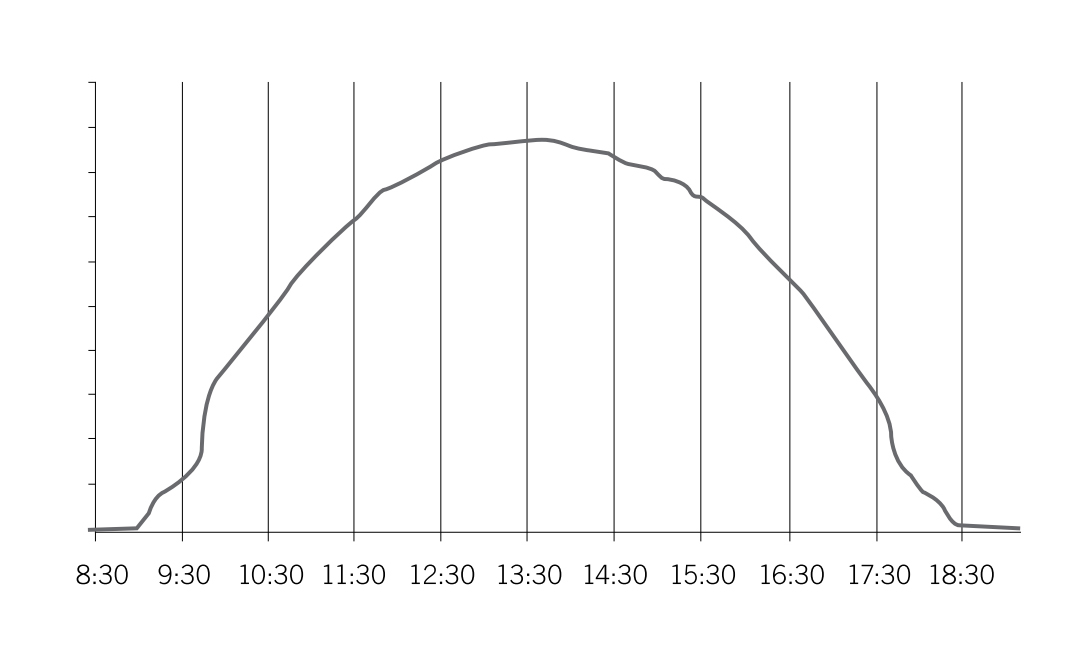 Figures 1 and 2 show two actual cases in which PV energy is produced at a 1MW power plant on a sunny day and on a day with scattered clouds, in addition to the output power when ESS are included in the plant.
Figures 1 and 2 show two actual cases in which PV energy is produced at a 1MW power plant on a sunny day and on a day with scattered clouds, in addition to the output power when ESS are included in the plant.
In this way, for example, conventional power plants have an output power variability of 3-10%/min, but PV plants can reach values of up to 80%/min, depending on their size. This fact takes particular importance in weak grids such as those in islands or small grids based on diesel generators, where high penetration levels could endanger the stability of the system.
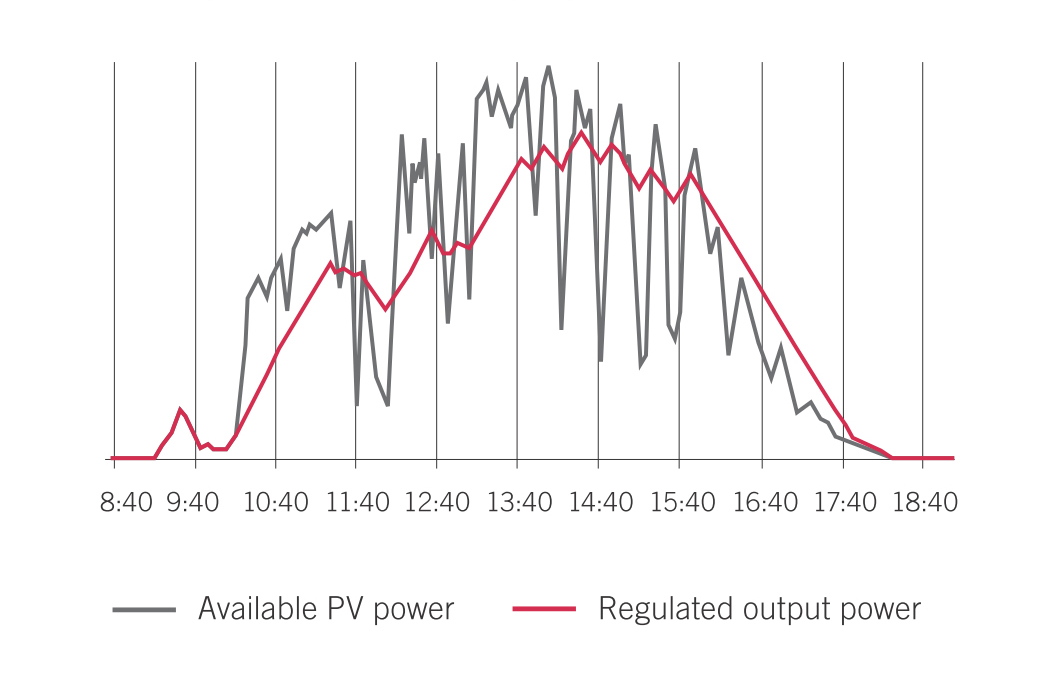 To counteract a sudden increase in irradiance, PV inverters can limit their production by moving away from their maximum power point range and operating like a conventional power plant. However, when there is a drop in irradiance, the PV inverter is unable to control the energy produced, therefore requiring the use of ESS to provide power and to limit variations.
To counteract a sudden increase in irradiance, PV inverters can limit their production by moving away from their maximum power point range and operating like a conventional power plant. However, when there is a drop in irradiance, the PV inverter is unable to control the energy produced, therefore requiring the use of ESS to provide power and to limit variations.
The integration of an ESS makes it possible to control the power ramps generated at the PV plant. Whenever a cloud passes over, with the subsequent loss of irradiance, the ESS provides the energy required to offset the energy shortfall. Once the cloud has gone, the available power increases sharply and this is used to charge the batteries whilst smoothly increasing the power output at the same time. Figure 3 shows an example of the system performance in the face of an 80%/min fluctuation in irradiance (up and down), in accordance with the 10%/min output power variation currently imposed by some grid operators, such as PREPA in Puerto Rico.
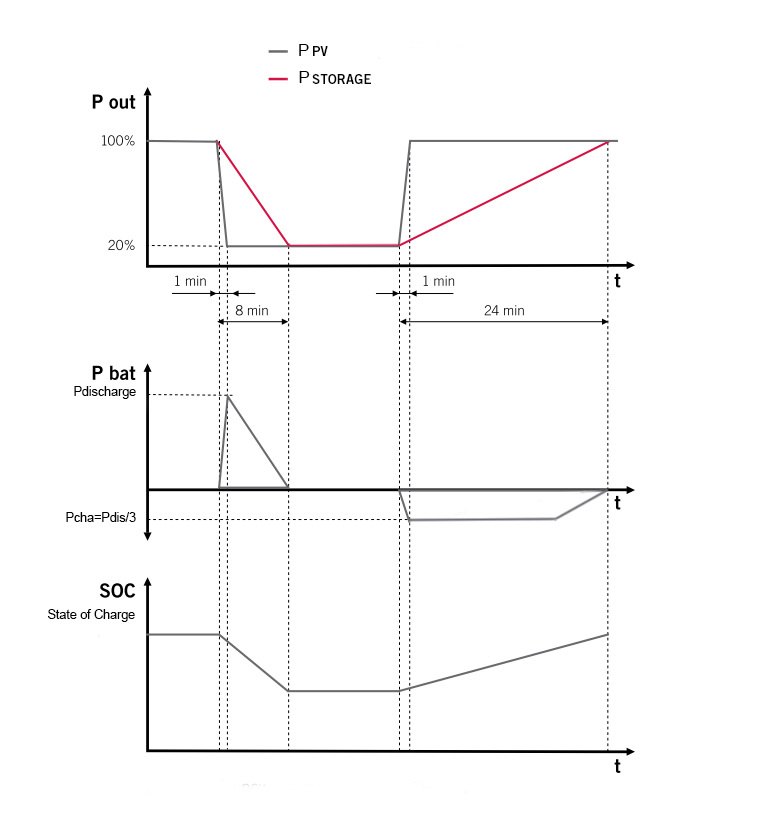
In order to address this issue and to facilitate the greater integration of PV energy into the grid, a family of storage central inverters have been developed with an output power ranging from 375 to 1,110 kVA, and are designed to integrate battery-based storage systems in PV plants. Moreover, it is possible to integrate the inverters and all the other electrical elements into a power station which can be supplied fully furnished on site, reducing capital expenditures (CapEx) and gaining cost-effectiveness. Thus, this storage (or photovoltaic) power station can achieve up to 3,500 kVA power output.
This kind of utility-scale solution has been developed by using the same technology applied to the medium-voltage photovoltaic power stations. The main reference is a 9,000 kWh storage system (with Li-ion batteries) coupled to a 9,000 kW PV plant.
Although there are several ways of integrating storage systems in PV plants, the engineers on this project believe the best one is to keep the ESS completely centralized, as if it was an independent installation coupled to the PV plant immediately before the point of connection with the medium voltage substation.
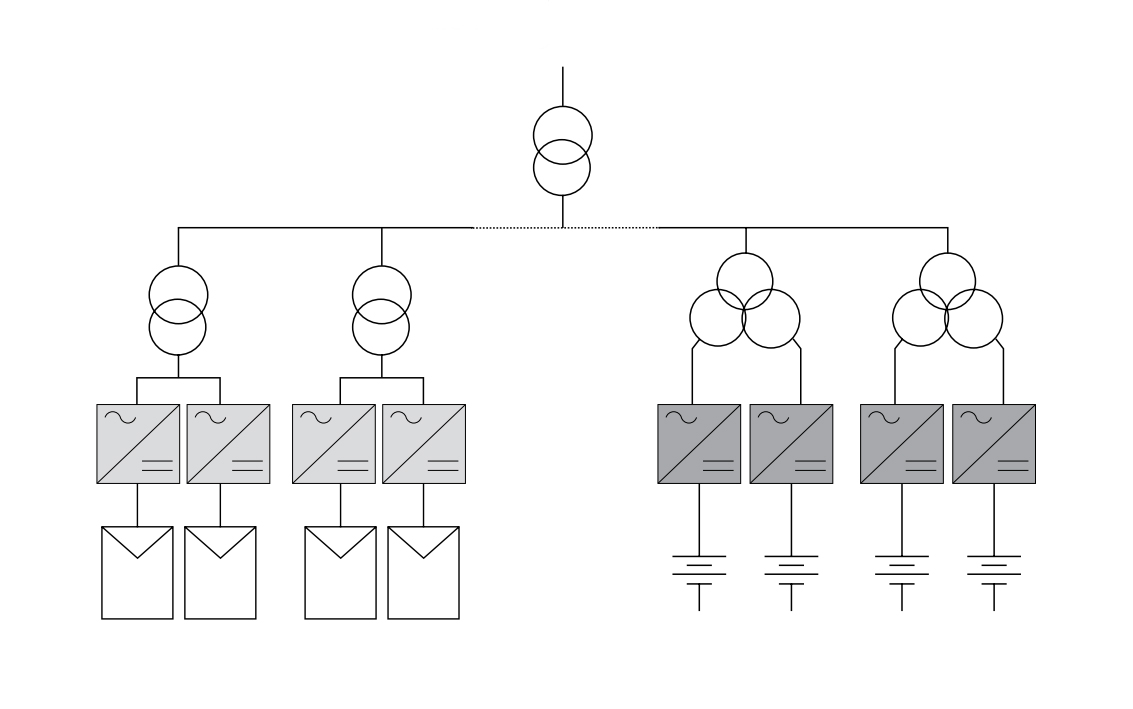 Figure 4 shows a typical connection diagram, with conventional grid-connected inverters for PV generation and dedicated storage inverters to connect the batteries to the electricity grid.
Figure 4 shows a typical connection diagram, with conventional grid-connected inverters for PV generation and dedicated storage inverters to connect the batteries to the electricity grid.
This option can be installed in PV plants that are already operating. With this system it is also possible to provide reactive energy with the battery inverters, thereby avoiding the need to over-size the PV inverters, should there be strict reactive power delivery requirements. The power plant controller will manage the energy flow between the grid and the batteries, adjusting the plant generation to a pre-established pattern.
In its annual ‘World Energy Outlook’ report, the International Energy Agency revealed that in 2014, renewables accounted for almost half of the new power generation capacity built worldwide and have now collectively become the second-largest generator of electricity after coal4. This clearly shows that we are now facing a global shift to low carbon energy sources.
Carlos Lezana is the marketing and communications director for Ingeteam’s Solar PV Energy Division.
Ingeteam, Inc. | www.ingeteam.com
1 Lux Research, 2014.
2 US Department of Energy. Grid energy storage.
3 According to BSW-Solar (German Solar Industry Association).
4 World Energy Outlook, November 2015. International Energy Agency.
Volume: 2016 March/April








